Our Brands
- Announcements
- Debt Investors
- Supporting our clients
Investor Relations
- Announcements
Our Brands
Search Results
Search
TP ICAP Group, a leading provider of market infrastructure, today announces that its Data & Analytics division has hired Andrew Cockburn as its Regional Sales Manager for Japan.
Andrew will specialise in adding value to clients in Japan through the rollout of new and existing solutions, helping clients to solve the complex challenges that arise when operating in today’s financial, energy and commodity markets. He will support TP ICAP’s Data & Analytics deep involvement in the market’s migration to the new Risk Free Rates and assist clients further by providing better analytical solutions, clearer trade transparency to enhance prudent valuations and liquidity risk management; as well as sharing new insights via cross-asset trade analytics.
Andrew has a detailed understanding of the Data & Analytics industry in Japan, having been based in the country for the last 14 years. He joins from Informa Maritime Intelligence’s Japanese sales team where he spent two and a half years supporting banks, insurance and shipping companies in updating their compliance and due diligence systems to meet the stringent standards expected by international trade and sanctioning bodies. Prior to this, Andrew spent 8 years at Thomson Reuters, now Refinitiv, where he established a track record in leading successful product migrations, system upgrade projects and commercial rollouts with a variety of clients.
Jonathan Cooper, Global Head of Sales, TP ICAP Data & Analytics ‘I am delighted to welcome Andrew to TP ICAP’s Data & Analytics division, his appointment builds on the core strengths and technical skills of our regional leadership team. Japan is the third largest economy in the world and Andrew’s industry expertise, coupled with in-depth regional knowledge means that we can continue to excel as a key operator in Japan. Andrew’s appointment is also an important component of TP ICAP Data & Analytics strategy to diversify and broaden its client base in Japan and the region as a whole.’
Andrew Cockburn as Regional Sales Manager for Japan, TP ICAP Data & Analytics: ‘I’m excited to join TP ICAP at an inflection point for the company as we transition to providing more value-added data solutions to support clients’ decision making and risk management. I hope to continue building on the important relationships with our clients in the largest market for us in APAC, and be a contributing factor in navigating the challenges of implementing new reporting and benchmarking requirements. TP ICAP has the history and scale of a long established financial services provider, but the agility and innovative mindset of a start-up, and I look forward to contributing to the future growth of the company.‘
About TP ICAP
TP ICAP is a global firm of professional intermediaries that plays a pivotal role in the world’s financial, energy and commodities markets.
Operating through our core brands, Tullett Prebon, ICAP, PVM, Coex Partners, Louis Capital Partners, Tullett Prebon Information, ICAP Information Services and PVM Data Services, we create strong networks in person and through technology. We provide comprehensive analysis and insight into market conditions and long-term trends. We combine data, knowledge and intelligence into contextual insight and commercial guidance.
By engaging with our clients, and providing innovative products and services, we enable our clients to transact with confidence, facilitating the flow of capital and commodities around the world, enhancing investment and contributing to economic growth.
Our values of honesty, integrity, respect and excellence underpin everything we do.
Media Contact
TP ICAP
Harriet Austerberry
E: Harriet.Austerberry@tpicap.com
Electronic trading solution rolled out across High Yield and Emerging Markets with plans to launch into Investment Grade in Q1 2021.
TP ICAP, a leading provider of market infrastructure, has launched Matchbook Rebalance, an electronic trading solution that reduces residual risks in fixed income portfolios, in the US market. Rebalance is a pure-electronic solution, available across High Yield and Emerging Markets, with plans to also launch in Investment Grade products within Q1 2021.
Matchbook Rebalance uses TP ICAP’s proprietary algorithmic trading technology, which allows clients to upload their entire portfolios onto the platform and manage their participation and results based on a choice of parameters and controls.
This new solution replaces the FUSION Scrapbook platform which was launched in 2018 by Oksana Cole, Head of US Matchbook Credit Sales, and her team. New and existing clients will now benefit from the Rebalance platform, which successfully launched across TP ICAP’s EMEA operations at the end of last year.
Fausto Serrano, Head of eCredit and Matchbook Rebalance Americas, said: “Our network of corporate bond and emerging market traders is one of the largest in the US, and through Matchbook Rebalance we’re able to offer a high quality risk mitigation solution. Our business is focused on electronification and, through innovative platforms such as this, we’re able to make trading easier and more effective for our clients.”
Matchbook Rebalance is operated as a regulated, pure electronic post trade solution.
About TP ICAP
TP ICAP is a global firm of professional intermediaries that plays a pivotal role in the world’s financial, energy and commodities markets.
Operating through our core brands, Tullett Prebon, ICAP, PVM, Coex Partners, Lois Capital Partners, Tullett Prebon Information, ICAP Information Services and PVM Data Services, we create strong networks in person and through technology. We provide comprehensive analysis and insight into market conditions and long-term trends. We combine data, knowledge and intelligence into contextual insight and commercial guidance.
By engaging with our clients, and providing innovative products and services, we enable our clients to transact with confidence, facilitating the flow of capital and commodities around the world, enhancing investment and contributing to economic growth.
Our values of honesty, integrity, respect and excellence underpin everything we do.
Media Contact
TP ICAP
Laura Whybrow, Communications Manager
E: Laura.Whybrow@tpicap.com

TP ICAP Group, a leading provider of market infrastructure, today announces the appointment of Andrew Polydor as Head of Global Markets.
In this newly-created role, Andrew will be responsible for the Group’s Global Broking division in addition to his current responsibilities as head of TP ICAP’s Energy & Commodities (“E&C”) division, a position he has held for the past 12 years during which time he has successfully built the business into the world’s largest E&C brokerage. Two deputy heads, to be announced shortly, will support Andrew in leading and growing the E&C franchise.
TP ICAP’s Global Broking division is the largest interdealer broker in the world and services markets in Rates, FX & Money Markets, Emerging Markets, Equities and Credit products. In 2019, Global Broking’s revenues were £1.2 billion.
Nicolas Breteau, Group CEO of TP ICAP, said: “Andrew’s proven capability to build industry-leading businesses positions him well to take our Global Broking franchise to the next level and continue to drive growth in E&C. He is forward-thinking when it comes to innovation and deploying technology, is entrepreneurial, pragmatic, and brings a dynamic, highly focused approach to execution.
“As such, he is the ideal candidate to implement our electronification, aggregation and diversification strategy across our Markets activity globally, and, in so doing, extend our market leadership position.”
Andrew Polydor said: “I am delighted to be taking up this role at such an important time for Global Broking and E&C. I am looking forward to working with my new colleagues to implement our progressive strategy and enhance how we serve our clients.”
Andrew began his career in Financial Markets in 1982 before moving on to set up Prebon Energy Sydney in the late 1990s, which became the premier broker in the Australian power market. He also established Prebon Environmental Consultancy Services, a pioneer in the carbon markets. Andrew later transferred to London to run Prebon’s growing energy business in Europe and was promoted to the position of Global Head of E&C at Tullett Prebon in 2008, becoming CEO of TP ICAP E&C in 2016.
About TP ICAP
TP ICAP is a global firm of professional intermediaries that plays a pivotal role in the world’s financial, energy and commodities markets.
Operating through our core brands, Tullett Prebon, ICAP, PVM, Coex Partners, Lois Capital Partners, Tullett Prebon Information, ICAP Information Services and PVM Data Services, we create strong networks in person and through technology. We provide comprehensive analysis and insight into market conditions and long-term trends. We combine data, knowledge and intelligence into contextual insight and commercial guidance.
By engaging with our clients, and providing innovative products and services, we enable our clients to transact with confidence, facilitating the flow of capital and commodities around the world, enhancing investment and contributing to economic growth.
Our values of honesty, integrity, respect and excellence underpin everything we do.
Media Contact
TP ICAP
William Baldwin-Charles, Group Media Relations Director
E: William.Baldwin-Charles@tpicap.com
Laura Whybrow, Communications Manager
E: Laura.Whybrow@tpicap.com
Tullett Prebon, part of TP ICAP Group, the world's largest interdealer broker, has launched Fusion Islamic Finance, a new platform that facilitates Commodity Murabaha transactions and provides liquidity to the Islamic financial marketplace.
The platform enables clients to purchase assets and take advantage of growth opportunities in the Halal sectors, infrastructure and Sukuk bonds.
Fusion Islamic Finance provides a safe and ethical environment to trade Commodity Murabaha. The platform permits our Second Counterparty, a non-affiliated independently-owned and managed trading company, with over twenty years of experience operating within the Islamic financial marketplace, to be fully integrated within our system. This enables clients to process transactions on Fusion swiftly, saving both time and money while significantly enhancing their experience.
Tullett Prebon's platform uses market-leading connectivity for integration, straight-through processing, and single-screen access that offers simpler and quicker access to large pools of liquidity. Customers can also connect from third-party data platforms, such as Reuters or Bloomberg.
There are a growing number of participants in the Islamic financial marketplace and its three main sectors – banking, capital markets and Takaful – were estimated to be worth USD 2.44 trillion in 2019, up from USD 2.05 trillion in 2018[1]. Tullett Prebon believes its trusted reputation with banks globally, its long-standing presence in the Middle East with offices in Bahrain and the UAE, and the technological innovation of its new Commodity Murabaha platform, positions the firm well to realise this growth opportunity.
Harry Packenham, Associate Director - Islamic Finance, commented: "Fusion Islamic Finance offers clients a superior experience with a quick and easy to use system for Commodity Murabaha transactions.”
Paul Dunkley, Senior Managing Director of Tullett Prebon, said: “We are very excited to be entering the large and rapidly growing market of Islamic Finance. We have ambitious plans for this market, and we are confident that we can leverage our position as the world’s largest interdealer broker, with an unrivalled ability to access liquidity, to provide our clients with a compelling proposition.”
About TP ICAP
TP ICAP is a global firm of professional intermediaries that plays a pivotal role in the world’s
financial, energy and commodities markets.
Operating through our core businesses, Tullett Prebon, ICAP, PVM, Coex Partners, Tullett
Prebon Information, ICAP Information Services and PVM Data Services, we create strong
networks in person and through technology. We provide comprehensive analysis and insight
into market conditions and long-term trends. We combine data, knowledge and intelligence
into contextual insight and commercial guidance. By engaging with our clients, and providing innovative products and services, we enable our clients to transact with
confidence, facilitating the flow of capital and commodities around the world, enhancing
investment and contributing to economic growth.
Our values of honesty, integrity, respect and excellence underpin everything we do.
Media Contact
TP ICAP
Joss Turner
E: joss.turner@tpicap.com
[1]Figure: Bank of England: Why Islamic Finance has an important role to play in supporting the recovery from Covid
Sources: Bloomberg, COEX PartnersGlobal exchange traded derivative volumes tracked by COEX Partners in 2020 amounted to ~32.3 billion contracts – representing growth of 20.5% vs 2019.
The widely reported spike in retail account activity brought substantial volume uplift across equity markets. From ‘micro’ index futures to ETF options and across regions, volumes saw extraordinary gains. US short term rates markets spiked record volumes in March, with the CME Eurodollar future breaking 100 million contracts in a single month for the first time in its history. The Treasury futures complex hit a record 160 million contracts in February as Covid-19 emerged in the US, triggering the initial equity market rout and huge flight-to-quality flows.
It was a year of two distinct halves for interest rate markets, however. By August, short term rates markets were experiencing breathtaking year-on-year volume declines. Australia’s ASX24 90 day bill futures took a devastating hit once the RBA cut its Cash Rate Target to 0.1%. H2 volumes cratered to levels not seen since 1996 when the 90d Bills were still trading in open outcry pits. The contract ended the year down 51%. Q3 also saw the mighty Eurodollar future briefly dethroned by CME’s e-mini S&P500 as the world largest futures contract.
Global listed derivatives year-on-year volume growth

Sources: Bloomberg, COEX Partners
Global top 50 futures contracts by traded notional in USD equivalent 1
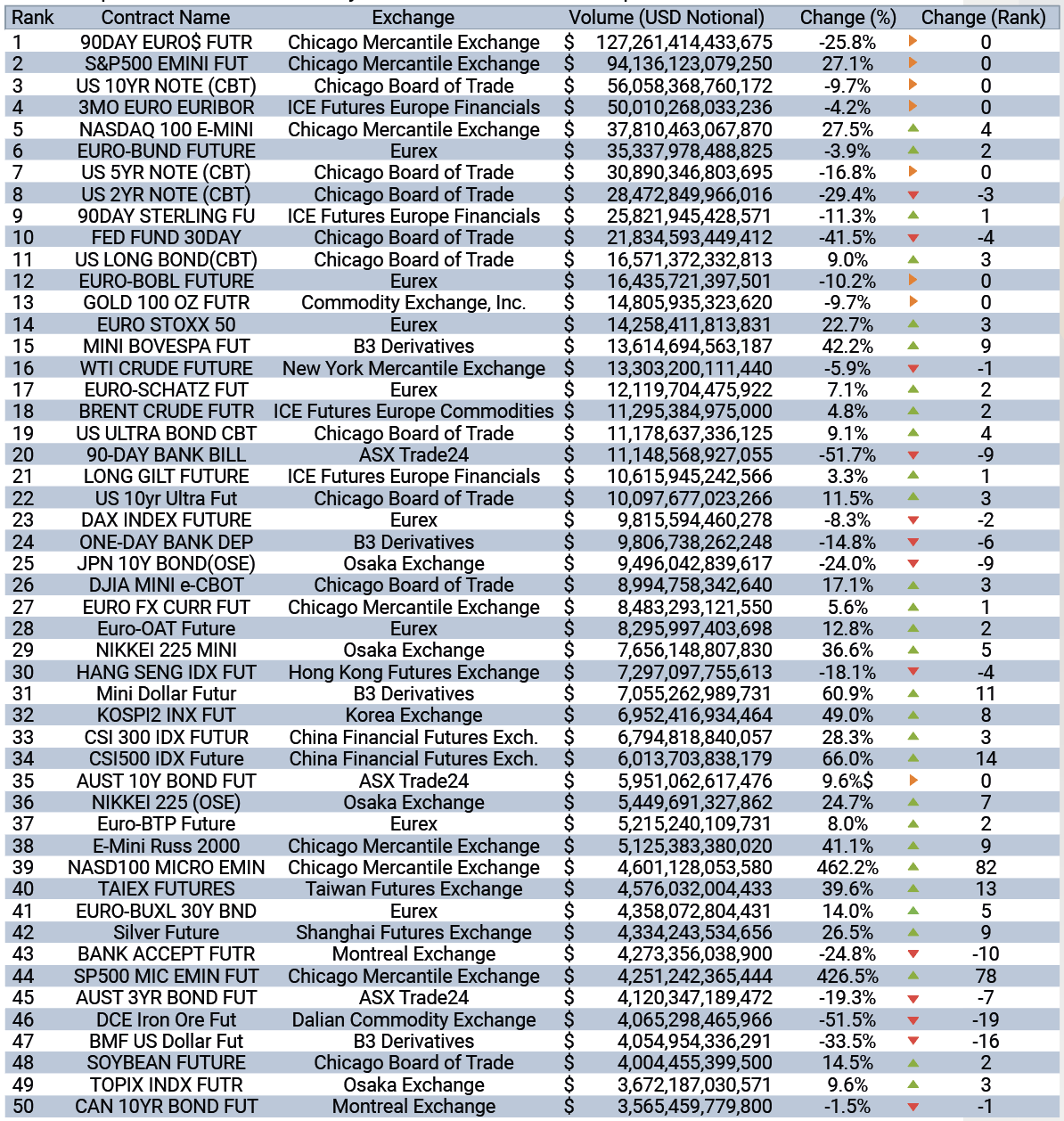 Sources: Bloomberg, COEX Partners
Sources: Bloomberg, COEX Partners
Small is beautiful
A perfect illustration of the sheer scale with which smaller investors impacted market volumes was the growth in CME micro equity index futures. In 2020, a little over two years after their extremely prescient launch, the CME micro e-mini Nasdaq future (~178 million contracts for the year) is trading more contracts than the long established and already hugely successful e-mini Nasdaq future (~146 million contracts). In USD notional terms, and despite its retail orientation, the micro contract traded more than 15% of the size of the more established e-mini in Q4.
US equity index futures growth was not limited to the micros. The e-mini S&P500, e-mini Nasdaq, e-mini Russell 2000 and CBT mini Dow Jones in aggregate added more than 162 million contracts to their 2019 tally – growth of 27.1%.
1 Traded Notional for non-USD contracts is estimated using the average relevant FX rate for the year
Libor-based STIRs: The beginning of the end
Thanks to huge volumes in the three months to April, the Eurodollar once again took the crown as the world’s largest futures contract (measured in USD notional). However, as the Fed hit its terminal rate for the year, activity declined sharply resulting in an overall 25.8% drop vs. 2019. Whilst this is at the extreme of historical annual declines, it is not unprecedented as 2009 and 2012 saw similar volume falls.
The sheer speed of the slowdown once the Fed Target Rate had reached its floor was extraordinary. Q3 volume declines were astonishing. Eurodollar futures fell 56% vs 2019, a loss of over 100 million contracts in absolute terms. The decline in Eurodollar, Eurodollar Mid-Curve and Eurodollar Weekly options amounted to a further 76 million contracts in aggregate. Adding in SOFR and Fed Fund Futures, the CME STIR products gave up 203 million contracts in Q3 2020 vs Q3 2019. The July futures tally of 22.9 million contracts was the lowest monthly total since December 2004. With the market anticipating that Covid-19 related, extraordinary monetary policy measures will remain in place until the US recovers from the pandemic’s economic impact, participants’ attention turned to the deferred contracts in H2. For example, open interest grew over 80% in the Golds. In absolute terms, however, OI growth in Greens, Blues and beyond was overwhelmed by the decline in Whites and Reds. Overall Eurodollar futures OI ended 2020 down 16.5% vs 2019.
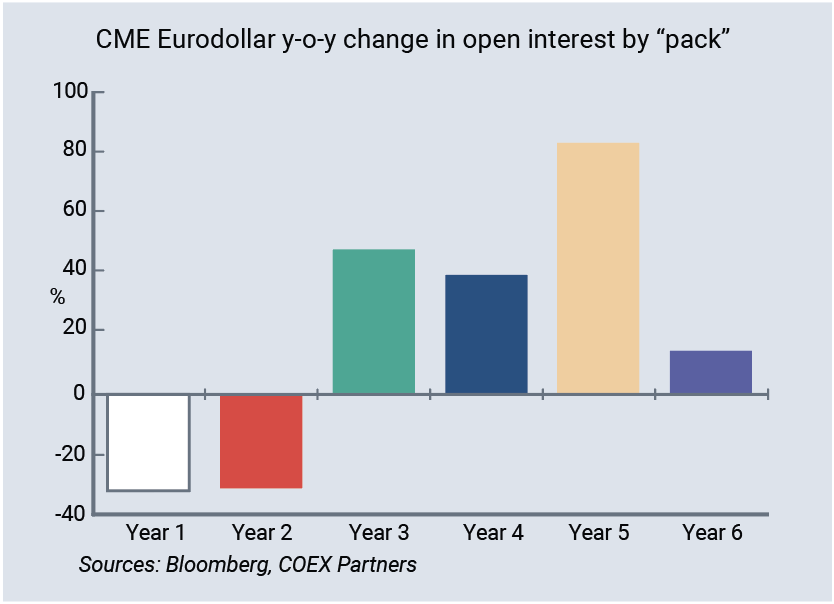
A world without Libor
Libor based STIR contracts saw a partial recovery in Q4. A substantial portion of these volumes were predicated on technical updates related to the calculation period and implementation time-lines for Libor-fallback rates. Spreads based around the speculated implementation dates in Short Sterling & Eurodollars traded record volumes vs. historic volumes of equally deferred spreads.
As we enter 2021, reminiscent of 2009, Libor based STIR volatility/volumes may be constrained at the front end by low rate policies. Further along the strips, their volatility may decline as expectations grow that these contracts will converge to their respective fallback rates – a spread over the respective Adjusted RFR1. It was ironic that briefly in 2020, Fed expectations suppressed Libor based STIR growth, whilst the re-referencing process supported it.
1 Please refer to the BSIL / ISDA IBOR Fallback Rate Adjustments Rulebook for more information
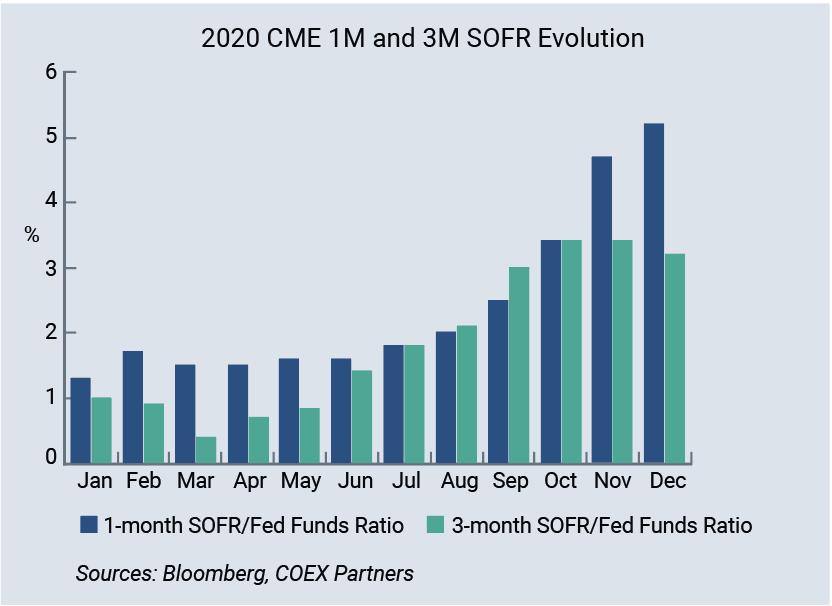
CME SOFR futures progress
SOFR futures were surprisingly flat for most of the year. It was September before 3M SOFR took out the March 2019 monthly record with an 823k lot print for the month. Overall 3M SOFR gained 45.9%. In contract terms this represents 7.6 million lots for the year. 3M SOFR has big boots to fill as the Eurodollar future winds down in the coming years. Currently, it stands at a little over 3% in volume terms.
However, there is an argument to be made that, at the time of writing, 3M Eurodollar futures beyond the Jun ‘23 expiry already represent a proxy for the 3M SOFR future given that the market, for now, has started to price them more closely to the Libor fallback regime. Put another way, it is quite possible that the spread between 3M Eurodollars and 3M SOFR becomes increasingly stable in the deferred contracts such that they become almost interchangeable up until the roll market between SOFR/E$ becomes more active. This will make for an easier shift in OI. 1M SOFR also gained 34% Y/Y to 5.22m lots but with the Fed on hold it was no surprise to see volumes decline 27% in Q4 vs 2019 – a win relative to the 76% decline in Fed Funds for the quarter!
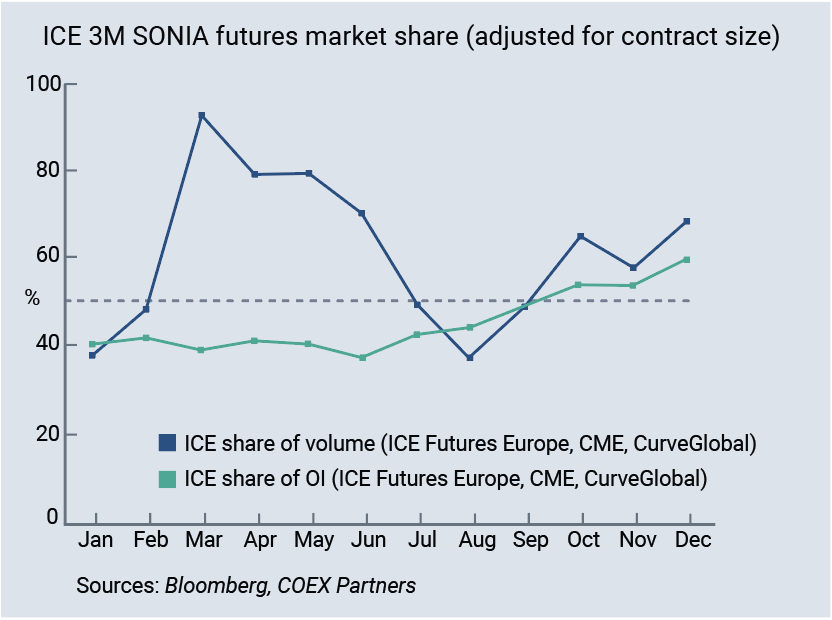
Fixed income: Yield begets volume
After a disorderly Q1, volumes chased yield along the US treasury curve.
The outbreak of Covid-19 wrought substantial volatility in US treasury and funding markets in February and March. The initial
wave of buying took 2yr yields from 1.38% to 0.245% in just 13 trading sessions. CME 2Yr, 10yr & Ultra Long Bonds posted all time historic
volume highs in February whilst 5Yr, Ultra10s and Long Bonds posted their second best ever months.
The initial scale of demand overwhelmed dealing desk’ ability to provide liquidity in OTR bonds, forcing investor flows into futures (just as the H0/M0 roll was underway). The resulting futures outperformance was compounded as in turn significant basis unwinds were triggered.
TYM0 implied repo-to-delivery more than doubled in the second week of March leading to FRBNY intervention. Further relief came
on April 1st as the FRS Board announced the temporary exclusion of US Treasuries and Deposits at Federal Reserve Banks from the SLR denominator.
April saw a substantially compressed trading range and an immediate decline in volumes. With a backdrop of strong central bank forward guidance, the search for yield began. By December 2020, the respective volume performance at each point on the CME US Treasury futures curve had become highly correlated (R2 = 90%) to the respective change in yield (see chart to right). Overall, bond contracts at CME/CBT ended the year down 14.3% vs 2019.
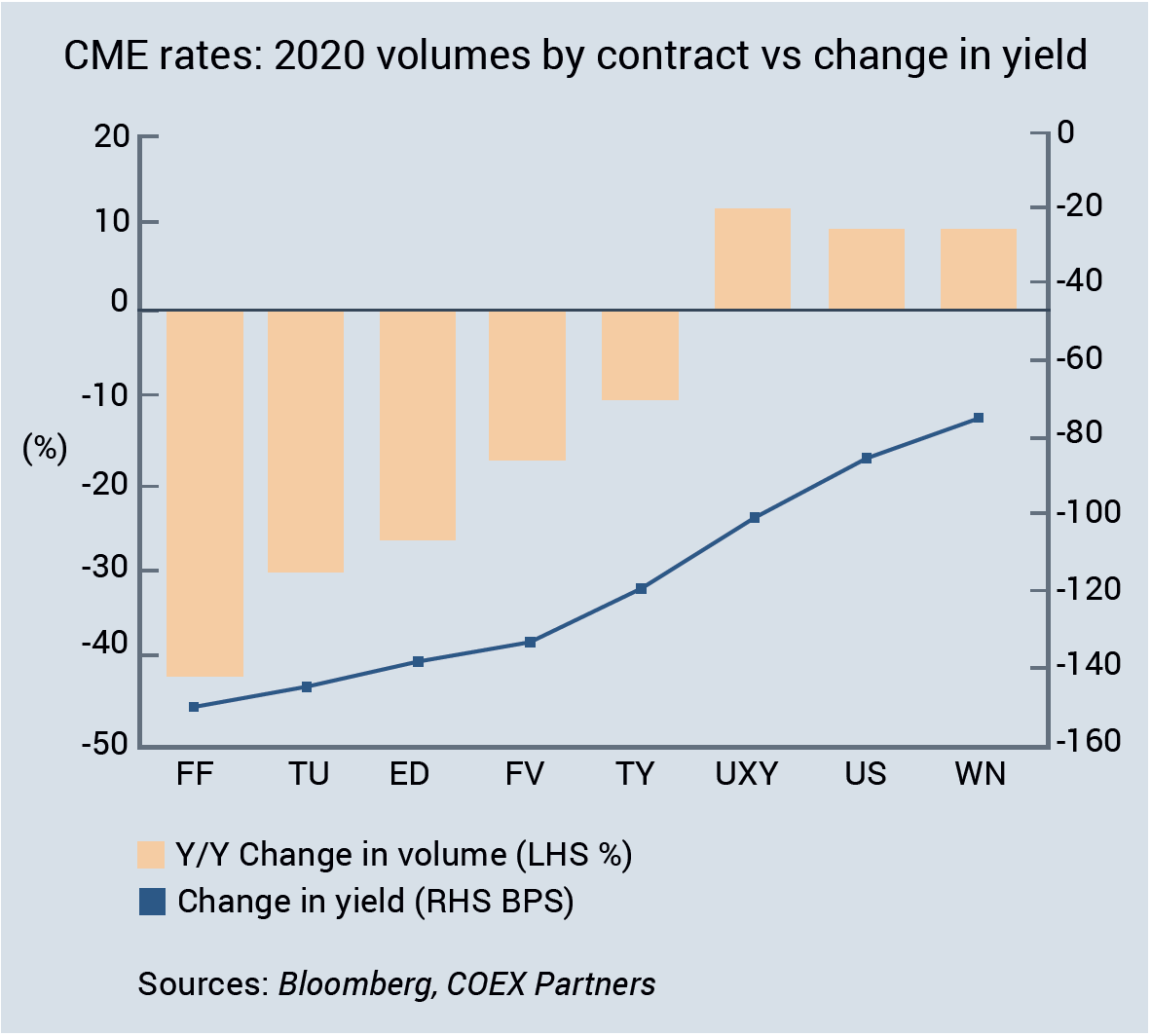
Brazil, China and India
Brasil's B3 dazzled again 2020. In USD terms, LatAm equity returns remained negative into year-end as local Central Bank action to cushion the impact of the pandemic accelerated the softening of local currencies in H1. The Central Bank of Brasil’s easing of the SELIC target rate to record lows was accompanied by record volumes in the B3 Derivatives DI futures.
The DIs posted 71.1 million contracts in March (just 8 million contracts shy of the whole of Q1 2019) and finished the year +8% (with the base effect of the huge H2 of 2019 limiting the Y/Y gains). Local investors appeared to embrace B3 derivatives mini-Dollar futures as a tool to manage 2020’s FX volatility; volumes more than doubled for the year.
The B3 mini-Dollar now ranks as the 31st largest contract by USD notional in our rankings. With an unprecedented low-rate backdrop, Brazil equity volume growth was nothing short of spectacular; B3 Equity iShares Bovespa ETF Options delivered 6x growth to 3.9 billion contracts.
B3 Derivatives’ mini-Bovespa futures came in at 2.9 billion contracts for the year - a pickup of 80% on 2019. The Brazilian market reeacted the broad retail growth narrative that underpinned much of the new volume that hit global exchanges in 2020. B3 released data in December showing that the number of accounts at B3 passed the 3.2 million mark at the beginning of October. According to the exchange, over 2 million accounts were opened in just one year to April 2020. In common with the global, Covid-19 era retail growth phenomenon, B3 also reported that its new crop of participants is young - averaging 32 years old, is more financially educated as a result of “the democratization of access to information”, and more tolerant of volatility.
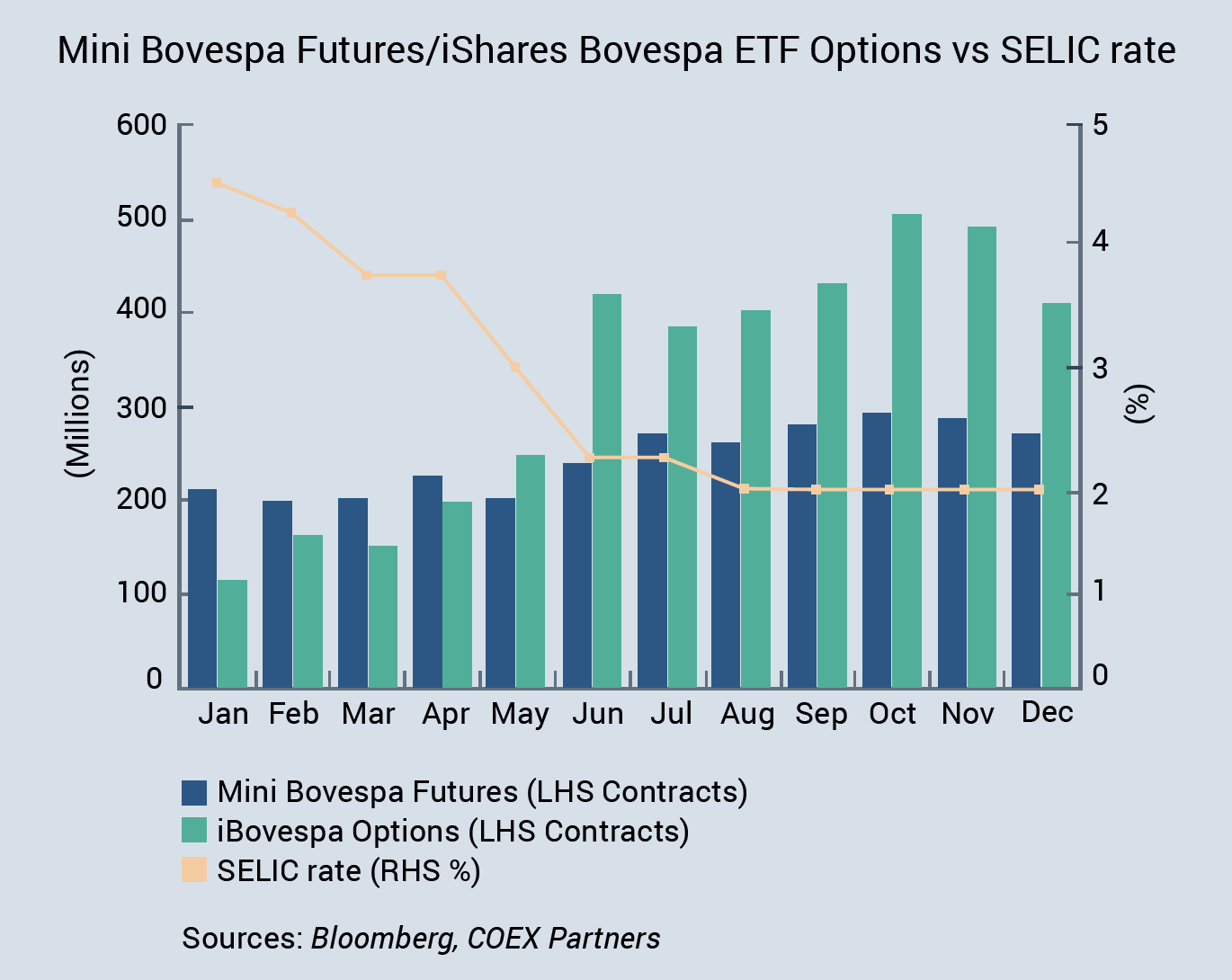
China equity index futures supplant commodities as recovery proxy
Chinese onshore markets were no exception to the global equity derivatives volume story. Aer the CSI300 futures reappearance last year in the global top 50 (following re-liberalization of trading rules), the contract posted a further 27% jump.
The small cap CFFEX CSI500 contract did even better, gaining 14 places in our ranking estimate with 66% growth. That said, Chinese markets declined overall as the largest commodity contracts struggled despite the price recovery. China’s star of 2019, DCE Iron Ore, suffered a 52% volume decline, SFE (Shanghai Futures Exchange) Nickel gave up 44% and SIEE Crude Oil volumes fell 41%.
China’s pause in 2020 in the context of buoyant global markets, saw its share of traded USD notional amongst the top 50 contracts halve to 1.4%. However, China remains very present in the ‘mittelstand’, with 12 of the next largest 50 contracts in the global rankings – amounting to 5.2% of the USD traded notional.
India sees strong trading in equities, FX and precious metals
NSE Niy 50 Index futures recorded their highest notional volumes for ve years with a 34.4% pickup on 2019 to 54.7 million contracts. The Nifty Bank Index leap-frogged the Nifty having posted 80% year on year growth to 76.2 million contracts.
Whilst the NSE’s bellwether INR/USD currency futures and options came in with their fourth consecutive year of growth to 849 million contracts, NSE’s currency complex was 6% weaker overall. In keeping with the theme, MCI benefitted from huge retail growth; Micro Silver and Gold ‘Petal’ futures being +216% and +520% respectively.
Agriculture focused NCDE ended the year 34% lower. As in other markets, equities thrived with Nifty Index options volumes surging 56%, though NSEBANK Index options declines erased the overall gain for the NSE indices.
Index futures and ETF options drive growth
Growth in US ETF options was very concentrated and partially offset by SPX Index options. Headline growth in US ETF options volume was impressive with a 40.4% improvement on 2019. It is worth noting, however, that the largest three ETF options by volume (SPY, QQQ & IWM) accounted for nearly all the growth within the universe of ~300 ETFs that we monitor for this analysis. SPY, QQQ & IWM options generated 548.2 million of the total 565.2 million uptick seen in 2020. It is also worth pointing out that the decline in volume of the SPX Cash Index options represents 10 times the volume in SPY equivalents. The ~10 million contract decline in SPX Index is worth about 20% of the growth in its SPY counterpart.

Once again, US index futures growth was flattered by extraordinary gains in CME/CBT micro e-mini Index Futures. Hot on the heels of 87m contracts generated in just eight months of their existence in 2019, the CME/CBT Micro Emini Index futures hit the ground running in 2020.
Their tally for the year came to 461 million contracts – growth of 426%. In contract volume terms, the micro e-mini S&P future became the second largest index contract at the exchange, easily surpassing the e-mini Nasdaq future. Of course, at 1/10th the size of their e-mini cousins, the picture changes dramatically in notional terms.
Adjusting the micro contracts into e-mini equivalents reduces North American Index Futures growth to a, still very respectable, 27%. Micro options launched in Q3. We watch with interest to see if they are able to make inroads into the SPY, QQQ, IWM & DIA ETF options’ increasingly dominant market share. Meanwhile at ICE Futures US, the successful MSCI EM index future posted its 11th consecutive year of growth (13.8%).
APAC / EMEA Equity Indices
Whilst the top APAC Index contracts remain more broadly distributed by country than is the case for Europe, there was a significant shift at the top of our rankings as the Osaka Nikkei 225 Mini contract overtook HKFEs Hang Seng as APACs largest contract by traded notional
(USD equivalent).
In Europe, the Eurex Eurostoxx Future comfortably retained its top ranking by notional, adding 20% vs 2019. Most notably from a growth perspective, the Eurex Mini Dax future added 48% on the year to 16.9 million contracts, lifting the contract to 6th place in the EMEA Index Futures Leaderboard.
Finally, an honourable mention to Eurex's Eurostoxx 50 Index Total Return futures with year on year of growth of 169% to a hair short of 10 million contracts for 2020."
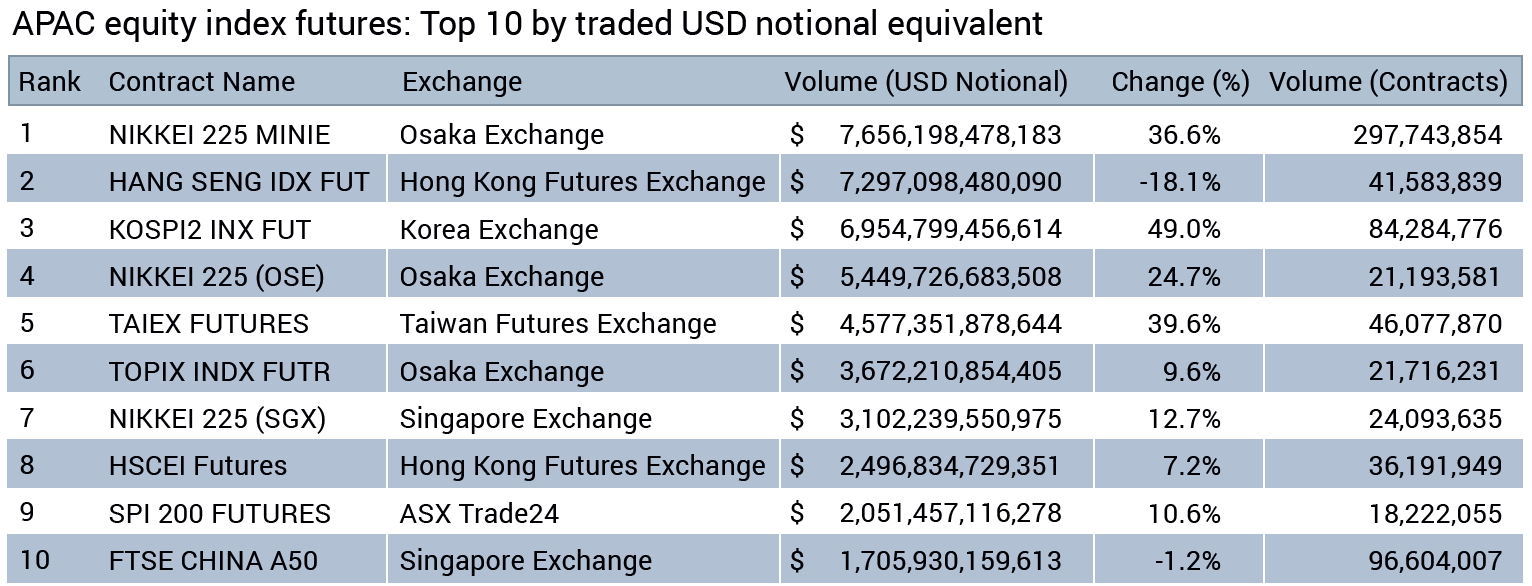
Disclaimer
This report was prepared by COEX Partners, a division of Tullett Prebon Financial Services LLC (Tullett Prebon), an introducing broker registered with the U.S. Commodity Futures Trading Commission and a broker-dealer registered with the U.S. Securities and Exchange Commission. Tullett Prebon is a member of the Financial Industry Regulatory Authority, Inc. (FINRA) and the National Futures Association (NFA). The information contained in and accompanying this communication may be confidential, subject to a legal privilege, or otherwise protected from disclosure, and is intended solely for the use of the intended recipients. If you are not the intended recipient of this communication, please delete and destroy all copies in your possession, notify the sender that you have received this communication in error, and note that any review or dissemination of, or the taking of any action in reliance on, this communication is expressly prohibited. All electronic communications may be reviewed by authorized personnel and may be provided to regulatory authorities or others with a legal right to access such information. Instant message communications may contain computer viruses or other defects, may not be accurately replicated on other systems, or may be intercepted, deleted or interfered with without the knowledge of the sender or the intended recipient. The information contained in and accompanying this communication is not, and should not be construed as, an offer, bid, or solicitation in relation to any financial instrument or as an official confirmation of any transaction. To the extent any of the information contained in and accompanying this communication reflects pricing information, such pricing information is purely indicative, and Tullett Prebon makes no warranty or representation that such pricing information reflects prices at which transactions may be or have been effected. Further, Tullett Prebon makes no representation, warranty or guarantee as to, and shall not be responsible for, the accuracy or completeness of any information contained in and accompanying this communication. None of the information in this message or any attachments hereto is intended to be research for the receiver. Opinions expressed herein are statements only as of the date indicated and are not given or endorsed by Tullett Prebon unless otherwise indicated by an authorized representative. Trading in futures, or options on futures or other derivatives entails significant risks which must be understood prior to trading and may not be appropriate for all investors. Each prospective investor should carefully consider whether futures or options on futures trading is suitable in light of their financial condition. Past performance of actual trades or strategies cited herein is not necessarily indicative of future performance.
To read the full report click here

FEEDBACK
SUBSCRIBE
Copyright © 2024 TP ICAP











